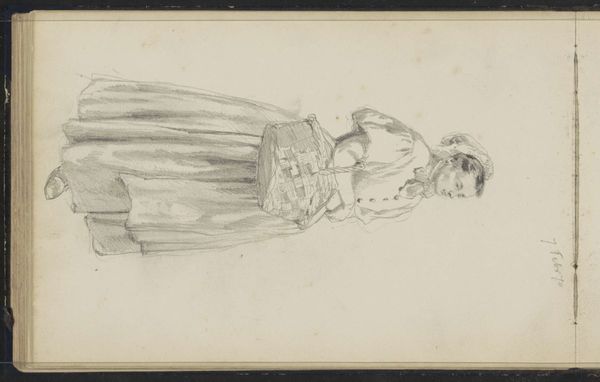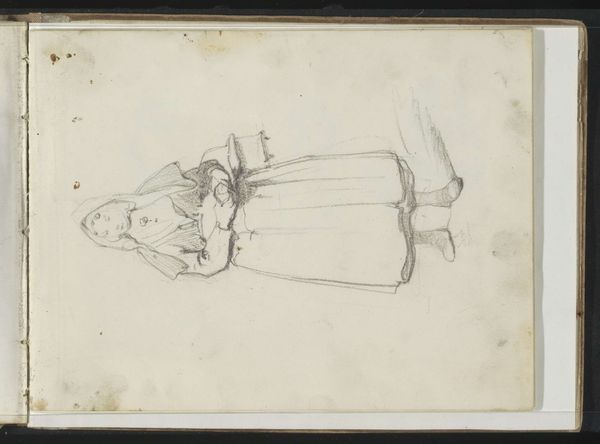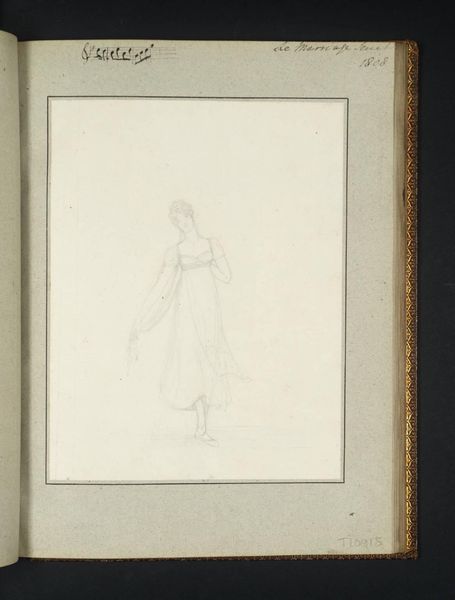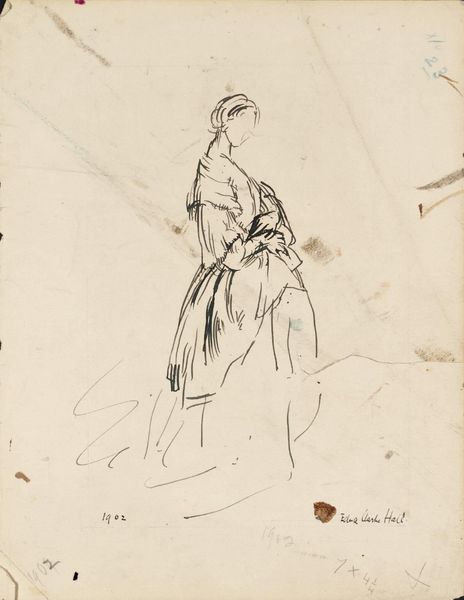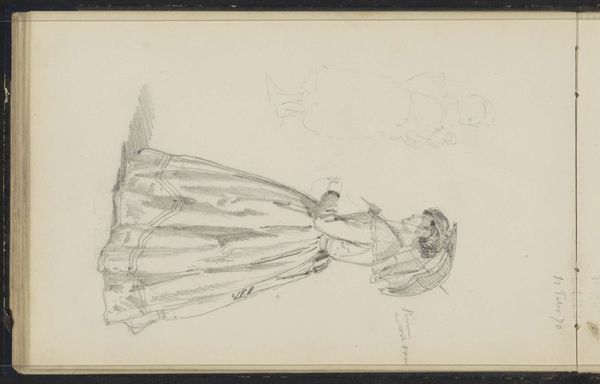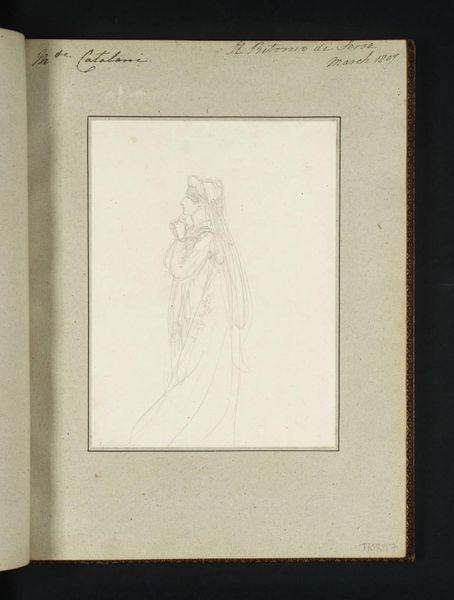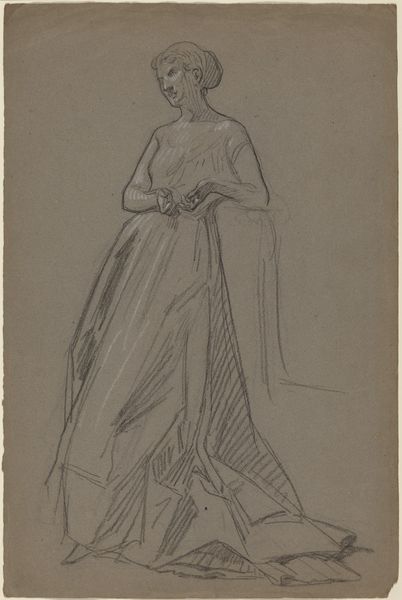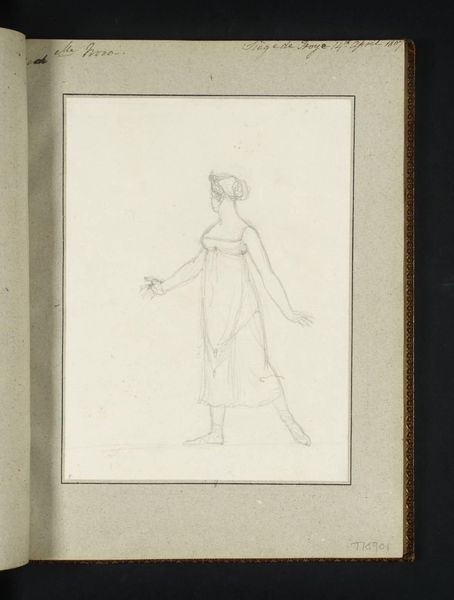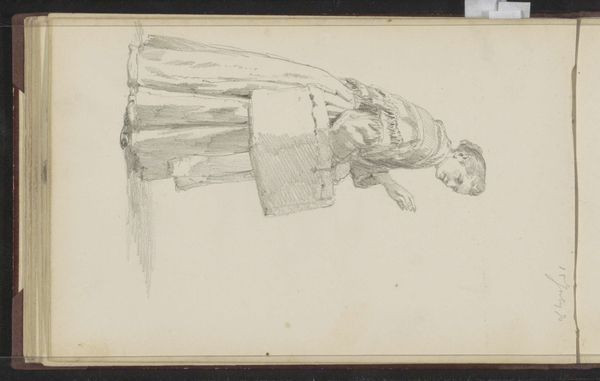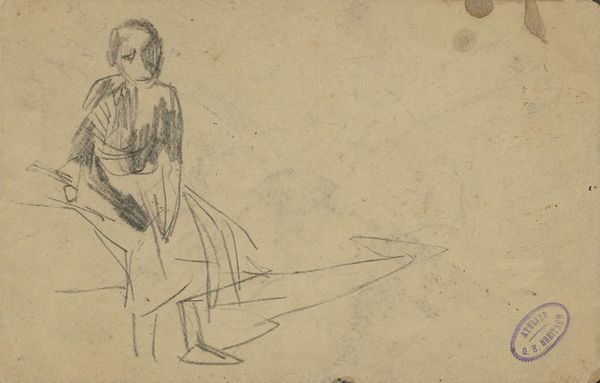
Copyright: Rijks Museum: Open Domain
Curator: Immediately, I am struck by its fragility, almost ephemeral. Editor: That's interesting. We are looking at a pencil drawing by Willem Witsen, "Standing Woman, Possibly in Wedding Dress," dating from around 1893-1897, housed here at the Rijksmuseum. What exactly about its form strikes you so? Curator: It’s the barely-there quality of the lines, the lack of detail, the sketchiness, all point to the processes of creating art. The tentative quality speaks of experimentation; the artwork appears incomplete and more an exploration than a formal portrait. One imagines Witsen rapidly capturing a fleeting image or testing the effect of the pencil on the page. This all seems quite radical, challenging established traditions of craftsmanship and finished artwork. Editor: I see that. And it makes the figure’s monumental simplicity even more poignant, don't you think? It is precisely these subtle contrasts in texture and tone which render depth and shadow so profoundly, offering not just an illustration but insight. Look closely at how the artist plays with shading around the figure's face and form. Curator: I find it curious that you consider a pencil sketch of an unfinished portrait monumental and profound. If the figure indeed dons bridal clothing, then surely the material constraints surrounding the access to specific material during the period heavily influenced Witsen’s drawing, its themes, and its medium, even! How does the social status affect Witsen’s decisions regarding style and production? Editor: The drawing's significance to me isn't reliant on historical factors, although those are interesting; rather, the tension between delicate lines and the weighty subject conjures, for me, feelings of both hope and vulnerability. Consider too how the composition emphasizes verticality, perhaps symbolic of her aspirations. It’s truly brilliant. Curator: I am mostly intrigued by the work in light of production processes—what was omitted, included, chosen? The final output says little. I find such inquiries more useful than the traditional understanding of symbolic content. Editor: Still, it’s hard to deny the visual poignancy of Witsen’s handling of light and line. Curator: To each their own. A valuable learning experience, at least, to see it from such differing views. Editor: Indeed! It shows the capacity for even the simplest artwork to generate conversation.
Comments
No comments
Be the first to comment and join the conversation on the ultimate creative platform.

